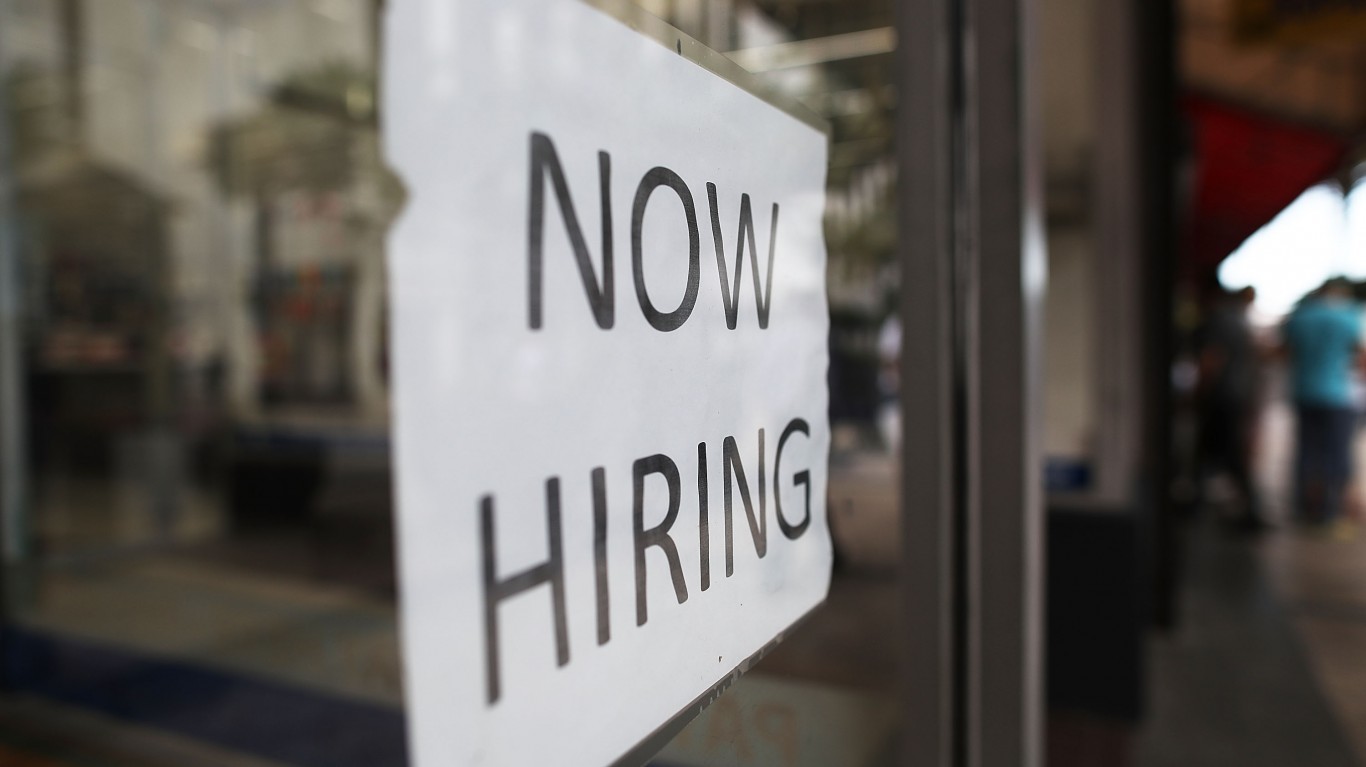
The U.S. economy continues to benefit from strong job growth as it recovers from the COVID-19 pandemic. Still, many companies and businesses are struggling to find and hire workers, as the number of unfilled jobs has hit multi-decade highs in recent months. There were nearly 12 million job openings nationwide at the end of April 2022, an all-time high, and 22% more than the same month last year.
Causes of the historic labor shortage vary. During the pandemic, early retirements surged, parents of school-age children left the workforce en masse, and immigration slowed considerably, resulting in millions of fewer workers than there otherwise would have been. This is what it costs to retire comfortably in each state.
Today, the labor force participation rate – the share of Americans 16 and older either working or looking for work – stands at 62.2%, a low not seen in the pre-pandemic United States since the 1970s. The national labor shortage is putting a strain on businesses across the country, forcing some to reduce hours and others to close completely.
Using data from the Bureau of Labor Statistics, 24/7 Wall St. identified the states with the most job openings. States are ranked by the share of all jobs that were unfilled as of the end of April 2022, the most recent month of available data. Depending on the state, the share of jobs that remain unfilled ranges from 5.7% to 8.7%. For context, 7.4% of jobs nationwide are unfilled.
Despite the need for workers, a small percentage of the labor force remains unemployed, suggesting that among the unemployed there is a mismatch between either the skills employers are seeking and the labor pool, or the kind of work or benefits job seekers desire and what employers offer. The national unemployment rate was 3.6% in April 2022. Depending on the state, unemployment ranges from 1.9% to 5.3%. (Here is a look at the states where unemployment is at an all time low.)
Click here to see the states with the most job openings
Click here to read our detailed methodology

50. New York
> Job openings at the end of April 2022: 5.7% of all jobs (569,000 total openings)
> April 2022 unemployment: 4.5%
> 1-year change in job openings: +6.4% (34,000 more openings)
> Labor force size: 9,404,038 people
[in-text-ad]

49. New Jersey
> Job openings at the end of April 2022: 6.1% of all jobs (273,000 total openings)
> April 2022 unemployment: 4.1%
> 1-year change in job openings: +0.7% (2,000 more openings)
> Labor force size: 4,634,049 people

48. Connecticut
> Job openings at the end of April 2022: 6.2% of all jobs (109,000 total openings)
> April 2022 unemployment: 4.4%
> 1-year change in job openings: +9.0% (9,000 more openings)
> Labor force size: 1,887,900 people

47. Pennsylvania
> Job openings at the end of April 2022: 6.3% of all jobs (397,000 total openings)
> April 2022 unemployment: 4.8%
> 1-year change in job openings: -5.3% (22,000 more openings)
> Labor force size: 6,409,766 people
[in-text-ad-2]
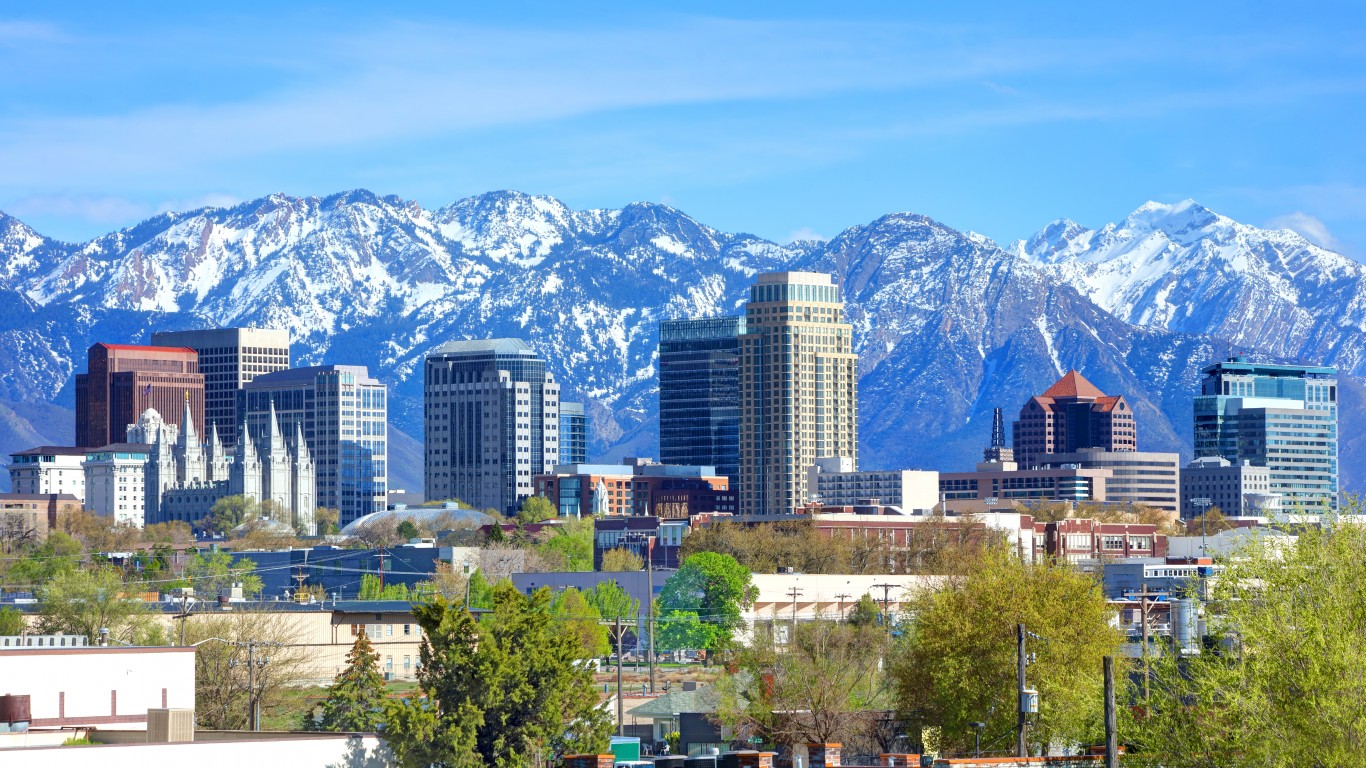
46. Utah
> Job openings at the end of April 2022: 6.6% of all jobs (118,000 total openings)
> April 2022 unemployment: 1.9%
> 1-year change in job openings: +16.8% (17,000 more openings)
> Labor force size: 1,714,407 people
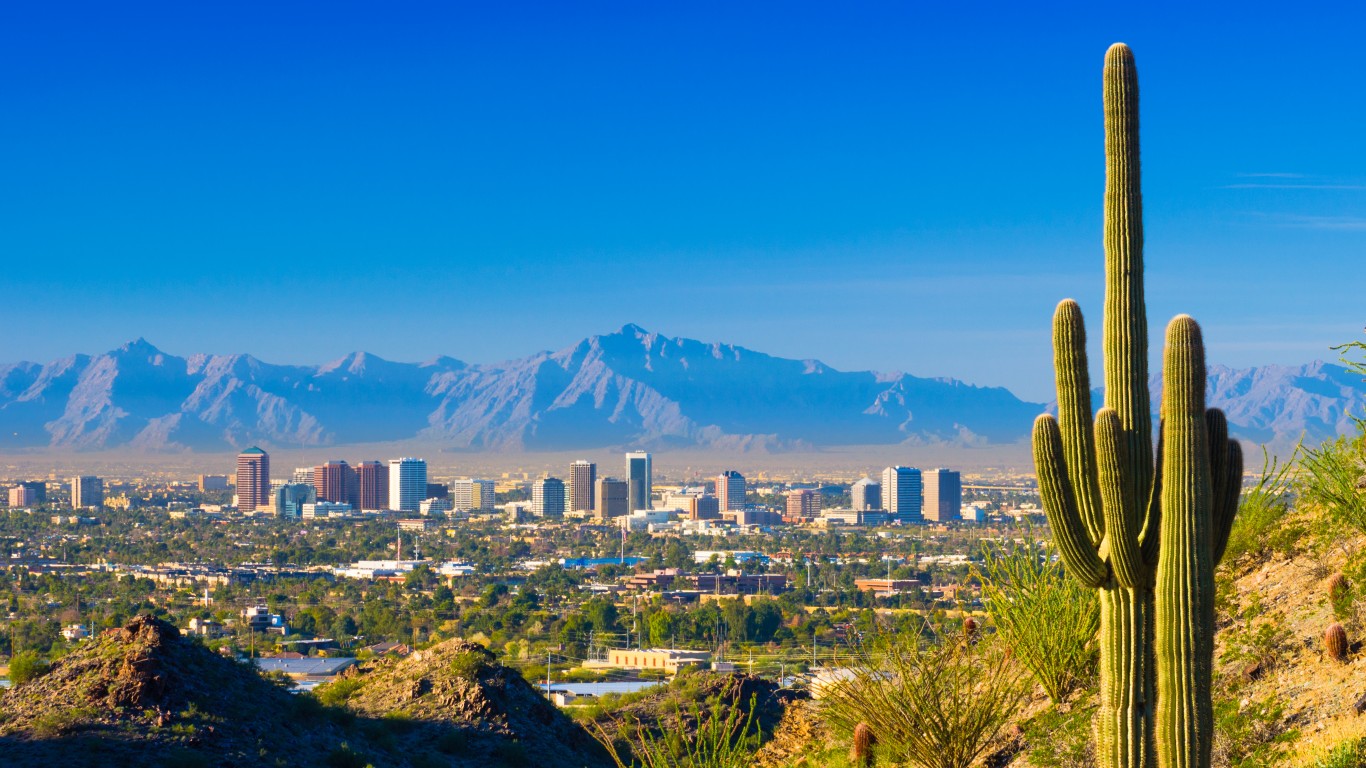
45. Arizona
> Job openings at the end of April 2022: 6.8% of all jobs (222,000 total openings)
> April 2022 unemployment: 3.2%
> 1-year change in job openings: +9.9% (20,000 more openings)
> Labor force size: 3,556,902 people
[in-text-ad]

44. Washington
> Job openings at the end of April 2022: 6.8% of all jobs (252,000 total openings)
> April 2022 unemployment: 4.1%
> 1-year change in job openings: +16.7% (36,000 more openings)
> Labor force size: 4,023,291 people

43. Maine
> Job openings at the end of April 2022: 6.9% of all jobs (46,000 total openings)
> April 2022 unemployment: 3.3%
> 1-year change in job openings: +7.0% (3,000 more openings)
> Labor force size: 678,788 people

42. Mississippi
> Job openings at the end of April 2022: 6.9% of all jobs (86,000 total openings)
> April 2022 unemployment: 4.1%
> 1-year change in job openings: +7.5% (6,000 more openings)
> Labor force size: 1,264,202 people
[in-text-ad-2]

41. California
> Job openings at the end of April 2022: 6.9% of all jobs (1300,000 total openings)
> April 2022 unemployment: 4.6%
> 1-year change in job openings: +34.9% (336,000 more openings)
> Labor force size: 19,229,150 people
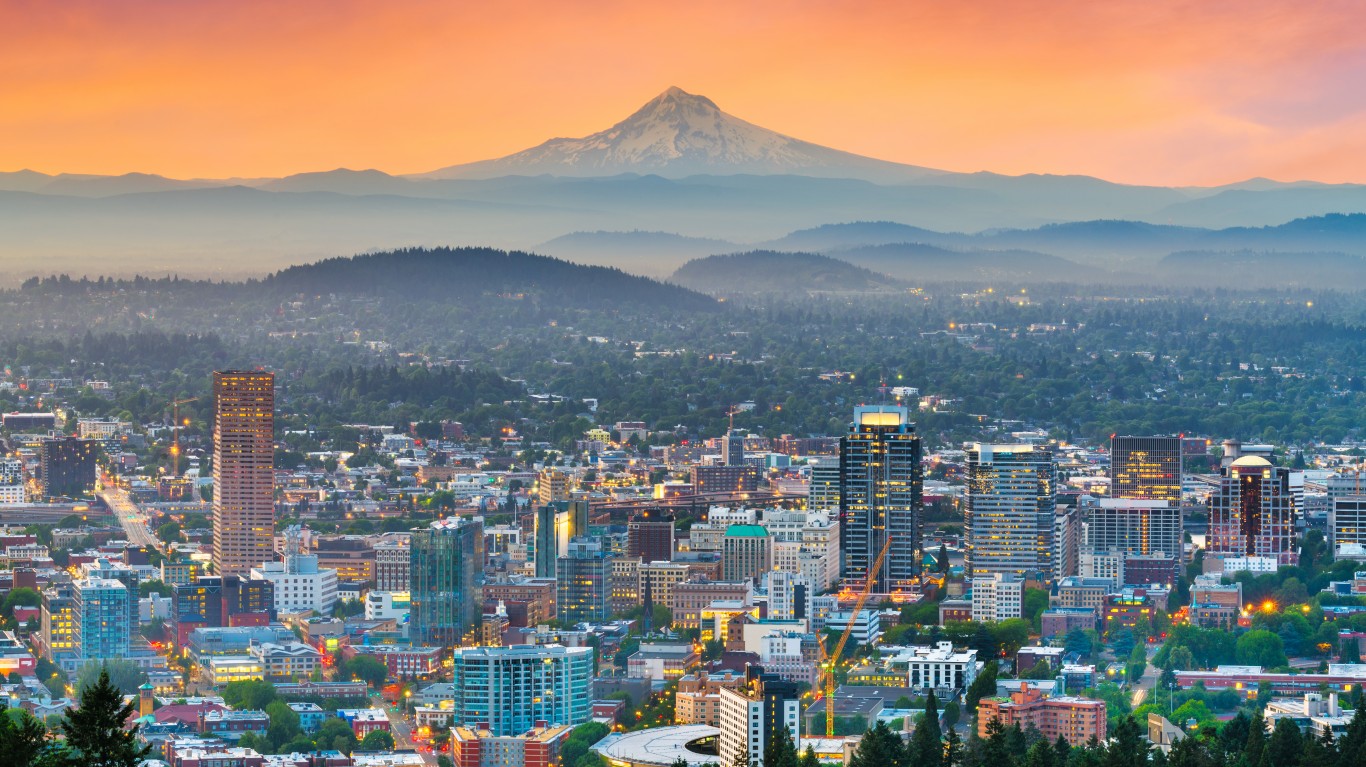
40. Oregon
> Job openings at the end of April 2022: 7.0% of all jobs (146,000 total openings)
> April 2022 unemployment: 3.7%
> 1-year change in job openings: +16.8% (21,000 more openings)
> Labor force size: 2,193,742 people
[in-text-ad]

39. Arkansas
> Job openings at the end of April 2022: 7.1% of all jobs (100,000 total openings)
> April 2022 unemployment: 3.2%
> 1-year change in job openings: +20.5% (17,000 more openings)
> Labor force size: 1,349,553 people

38. Ohio
> Job openings at the end of April 2022: 7.1% of all jobs (418,000 total openings)
> April 2022 unemployment: 4.0%
> 1-year change in job openings: +24.8% (83,000 more openings)
> Labor force size: 5,773,484 people
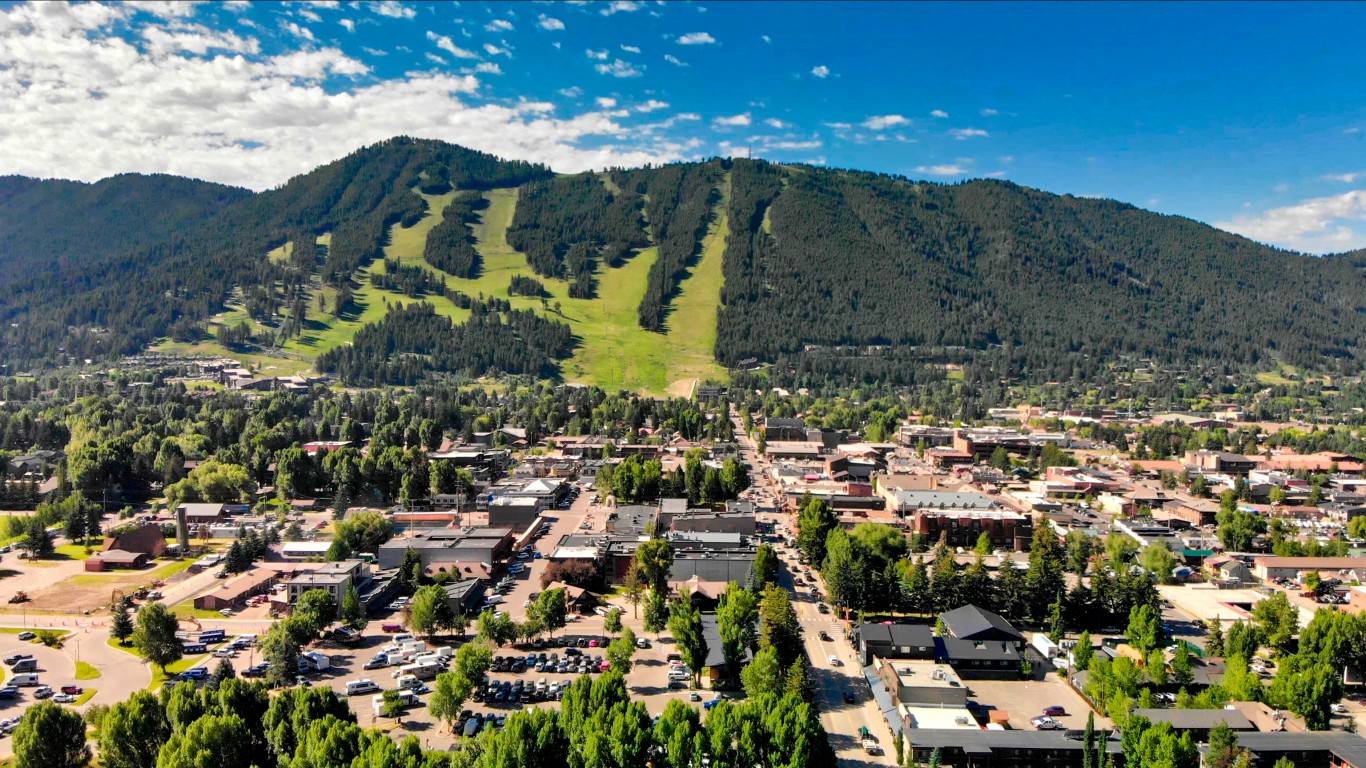
37. Wyoming
> Job openings at the end of April 2022: 7.2% of all jobs (22,000 total openings)
> April 2022 unemployment: 3.3%
> 1-year change in job openings: +22.2% (4,000 more openings)
> Labor force size: 290,691 people
[in-text-ad-2]

36. Idaho
> Job openings at the end of April 2022: 7.2% of all jobs (63,000 total openings)
> April 2022 unemployment: 2.6%
> 1-year change in job openings: +12.5% (7,000 more openings)
> Labor force size: 937,017 people

35. Nevada
> Job openings at the end of April 2022: 7.2% of all jobs (112,000 total openings)
> April 2022 unemployment: 5.0%
> 1-year change in job openings: +14.3% (14,000 more openings)
> Labor force size: 1,508,783 people
[in-text-ad]

34. Texas
> Job openings at the end of April 2022: 7.3% of all jobs (1044,000 total openings)
> April 2022 unemployment: 4.3%
> 1-year change in job openings: +23.6% (199,000 more openings)
> Labor force size: 14,459,425 people

33. New Hampshire
> Job openings at the end of April 2022: 7.4% of all jobs (54,000 total openings)
> April 2022 unemployment: 2.3%
> 1-year change in job openings: +12.5% (6,000 more openings)
> Labor force size: 759,932 people

32. Kansas
> Job openings at the end of April 2022: 7.4% of all jobs (112,000 total openings)
> April 2022 unemployment: 2.4%
> 1-year change in job openings: +38.3% (31,000 more openings)
> Labor force size: 1,501,739 people
[in-text-ad-2]

31. Missouri
> Job openings at the end of April 2022: 7.4% of all jobs (233,000 total openings)
> April 2022 unemployment: 3.4%
> 1-year change in job openings: +26.6% (49,000 more openings)
> Labor force size: 3,091,654 people
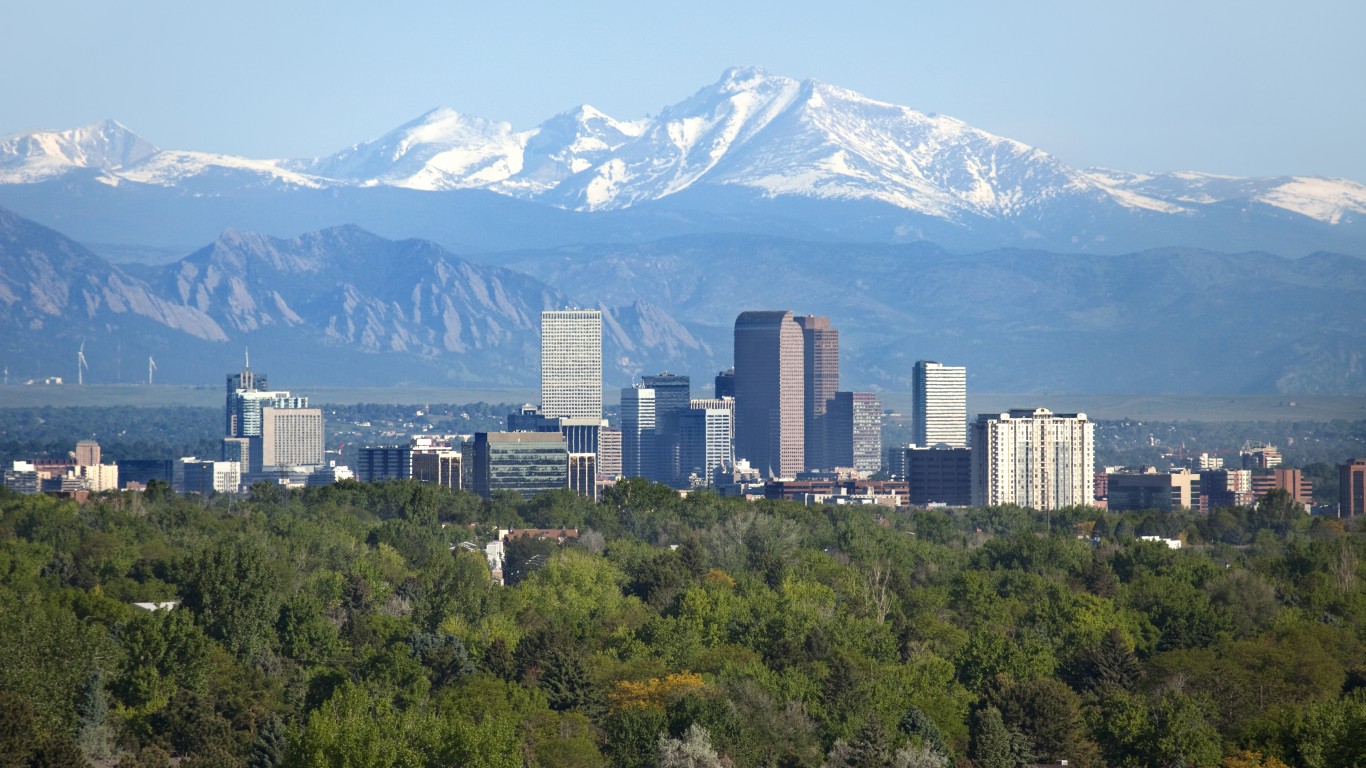
30. Colorado
> Job openings at the end of April 2022: 7.5% of all jobs (229,000 total openings)
> April 2022 unemployment: 3.6%
> 1-year change in job openings: +17.4% (34,000 more openings)
> Labor force size: 3,225,366 people
[in-text-ad]

29. Florida
> Job openings at the end of April 2022: 7.5% of all jobs (752,000 total openings)
> April 2022 unemployment: 3.0%
> 1-year change in job openings: +36.2% (200,000 more openings)
> Labor force size: 10,542,655 people

28. Maryland
> Job openings at the end of April 2022: 7.6% of all jobs (223,000 total openings)
> April 2022 unemployment: 4.2%
> 1-year change in job openings: -4.7% (11,000 more openings)
> Labor force size: 3,196,817 people
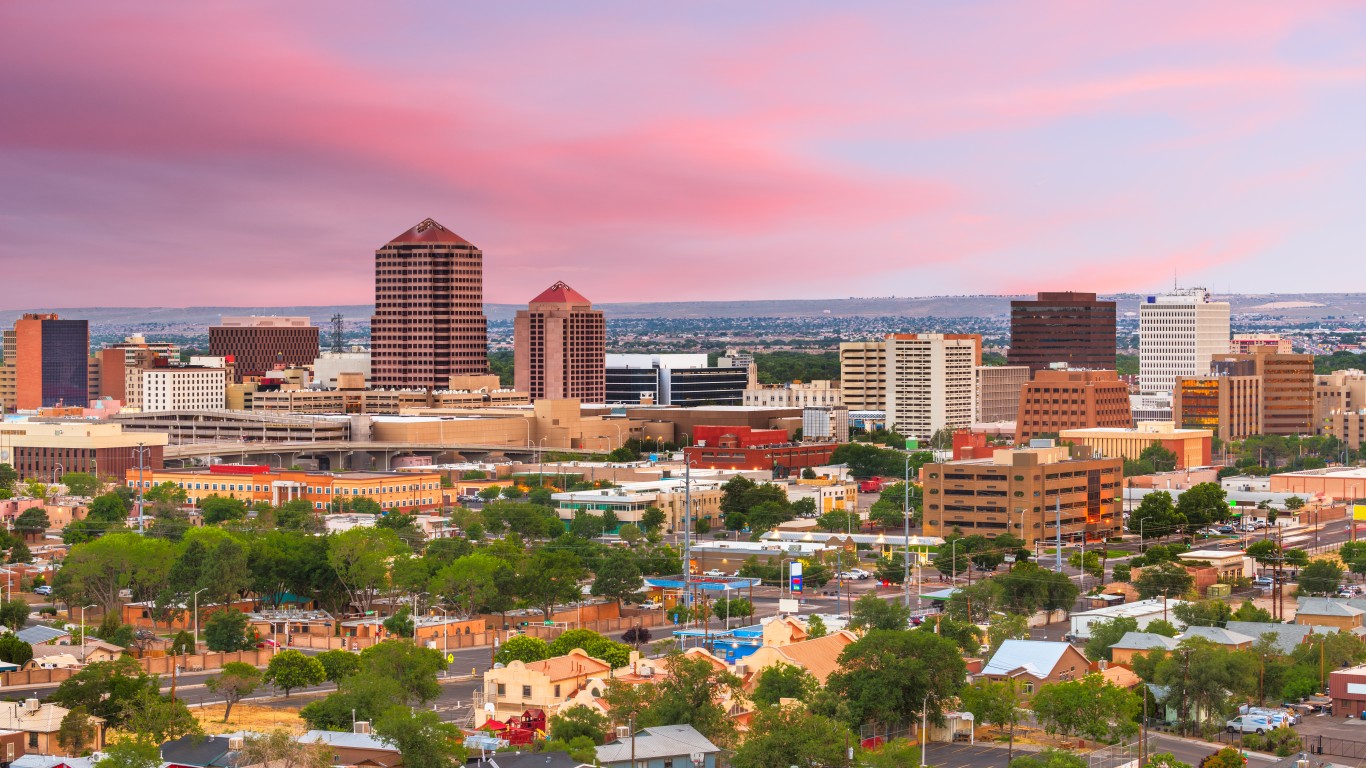
27. New Mexico
> Job openings at the end of April 2022: 7.7% of all jobs (71,000 total openings)
> April 2022 unemployment: 5.3%
> 1-year change in job openings: +18.3% (11,000 more openings)
> Labor force size: 949,673 people
[in-text-ad-2]

26. Oklahoma
> Job openings at the end of April 2022: 7.7% of all jobs (141,000 total openings)
> April 2022 unemployment: 2.7%
> 1-year change in job openings: +17.5% (21,000 more openings)
> Labor force size: 1,868,236 people

25. Delaware
> Job openings at the end of April 2022: 7.8% of all jobs (38,000 total openings)
> April 2022 unemployment: 4.5%
> 1-year change in job openings: +11.8% (4,000 more openings)
> Labor force size: 498,950 people
[in-text-ad]

24. Hawaii
> Job openings at the end of April 2022: 7.8% of all jobs (51,000 total openings)
> April 2022 unemployment: 4.1%
> 1-year change in job openings: +24.4% (10,000 more openings)
> Labor force size: 673,630 people
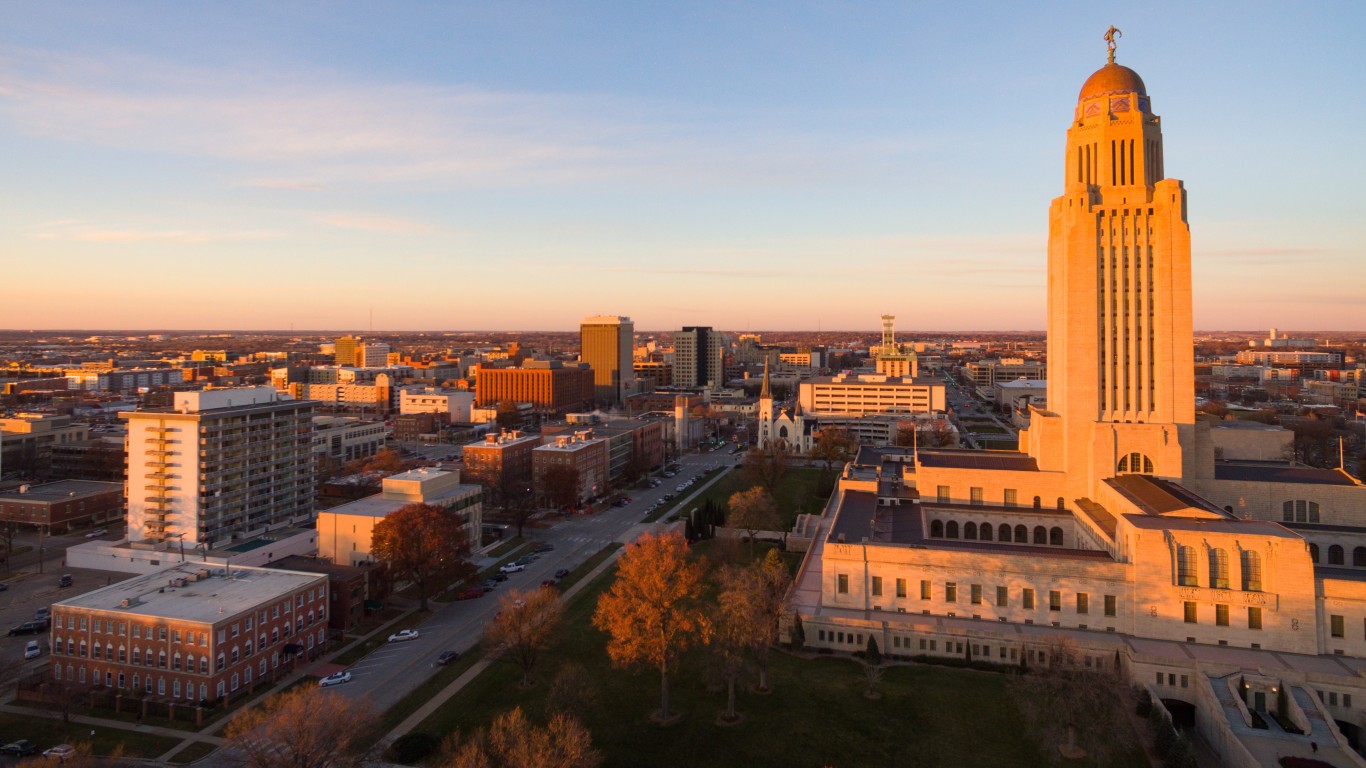
23. Nebraska
> Job openings at the end of April 2022: 7.8% of all jobs (86,000 total openings)
> April 2022 unemployment: 1.9%
> 1-year change in job openings: +41.0% (25,000 more openings)
> Labor force size: 1,060,739 people

22. Louisiana
> Job openings at the end of April 2022: 7.8% of all jobs (162,000 total openings)
> April 2022 unemployment: 4.1%
> 1-year change in job openings: +32.8% (40,000 more openings)
> Labor force size: 2,100,393 people
[in-text-ad-2]

21. Michigan
> Job openings at the end of April 2022: 7.8% of all jobs (363,000 total openings)
> April 2022 unemployment: 4.3%
> 1-year change in job openings: +5.8% (20,000 more openings)
> Labor force size: 4,833,339 people

20. Rhode Island
> Job openings at the end of April 2022: 7.9% of all jobs (42,000 total openings)
> April 2022 unemployment: 3.2%
> 1-year change in job openings: +13.5% (5,000 more openings)
> Labor force size: 569,045 people
[in-text-ad]
19. Alabama
> Job openings at the end of April 2022: 7.9% of all jobs (177,000 total openings)
> April 2022 unemployment: 2.8%
> 1-year change in job openings: +22.9% (33,000 more openings)
> Labor force size: 2,276,371 people

18. Indiana
> Job openings at the end of April 2022: 7.9% of all jobs (270,000 total openings)
> April 2022 unemployment: 2.2%
> 1-year change in job openings: +23.9% (52,000 more openings)
> Labor force size: 3,347,991 people

17. Virginia
> Job openings at the end of April 2022: 7.9% of all jobs (347,000 total openings)
> April 2022 unemployment: 3.0%
> 1-year change in job openings: +19.7% (57,000 more openings)
> Labor force size: 4,330,002 people
[in-text-ad-2]

16. Vermont
> Job openings at the end of April 2022: 8.0% of all jobs (26,000 total openings)
> April 2022 unemployment: 2.5%
> 1-year change in job openings: +8.3% (2,000 more openings)
> Labor force size: 332,746 people

15. South Dakota
> Job openings at the end of April 2022: 8.0% of all jobs (38,000 total openings)
> April 2022 unemployment: 2.3%
> 1-year change in job openings: +18.8% (6,000 more openings)
> Labor force size: 473,832 people
[in-text-ad]

14. Tennessee
> Job openings at the end of April 2022: 8.0% of all jobs (281,000 total openings)
> April 2022 unemployment: 3.2%
> 1-year change in job openings: +27.7% (61,000 more openings)
> Labor force size: 3,388,428 people

13. Massachusetts
> Job openings at the end of April 2022: 8.0% of all jobs (319,000 total openings)
> April 2022 unemployment: 4.1%
> 1-year change in job openings: +45.7% (100,000 more openings)
> Labor force size: 3,775,535 people

12. North Dakota
> Job openings at the end of April 2022: 8.1% of all jobs (37,000 total openings)
> April 2022 unemployment: 2.8%
> 1-year change in job openings: +37.0% (10,000 more openings)
> Labor force size: 410,859 people
[in-text-ad-2]

11. North Carolina
> Job openings at the end of April 2022: 8.1% of all jobs (417,000 total openings)
> April 2022 unemployment: 3.4%
> 1-year change in job openings: +27.1% (89,000 more openings)
> Labor force size: 5,056,492 people

10. Wisconsin
> Job openings at the end of April 2022: 8.2% of all jobs (259,000 total openings)
> April 2022 unemployment: 2.8%
> 1-year change in job openings: +33.5% (65,000 more openings)
> Labor force size: 3,147,274 people
[in-text-ad]

9. Montana
> Job openings at the end of April 2022: 8.3% of all jobs (46,000 total openings)
> April 2022 unemployment: 2.3%
> 1-year change in job openings: +21.1% (8,000 more openings)
> Labor force size: 560,660 people
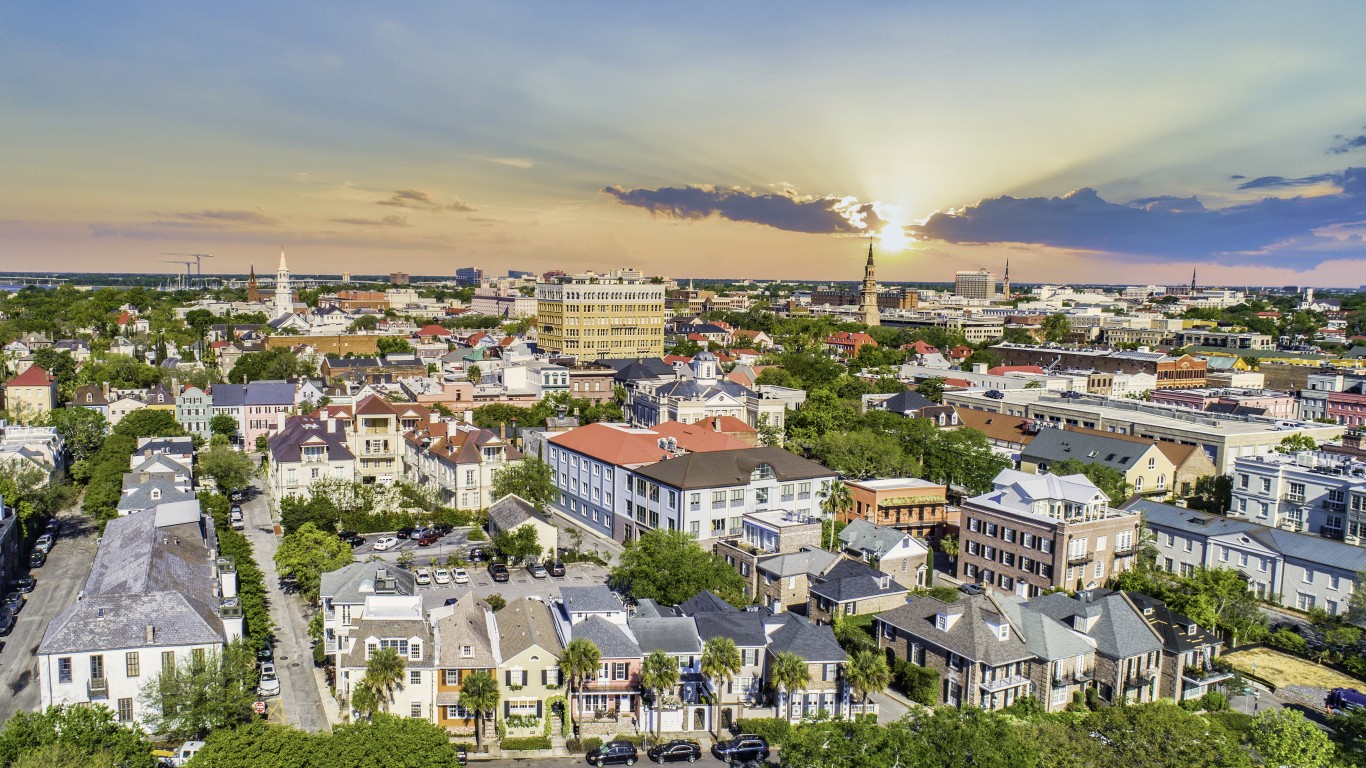
8. South Carolina
> Job openings at the end of April 2022: 8.3% of all jobs (200,000 total openings)
> April 2022 unemployment: 3.3%
> 1-year change in job openings: +14.9% (26,000 more openings)
> Labor force size: 2,391,819 people

7. Minnesota
> Job openings at the end of April 2022: 8.3% of all jobs (262,000 total openings)
> April 2022 unemployment: 2.2%
> 1-year change in job openings: +42.4% (78,000 more openings)
> Labor force size: 3,080,002 people
[in-text-ad-2]

6. Alaska
> Job openings at the end of April 2022: 8.4% of all jobs (29,000 total openings)
> April 2022 unemployment: 4.8%
> 1-year change in job openings: +16.0% (4,000 more openings)
> Labor force size: 361,817 people

5. West Virginia
> Job openings at the end of April 2022: 8.4% of all jobs (65,000 total openings)
> April 2022 unemployment: 3.6%
> 1-year change in job openings: +14.0% (8,000 more openings)
> Labor force size: 794,631 people
[in-text-ad]

4. Georgia
> Job openings at the end of April 2022: 8.4% of all jobs (437,000 total openings)
> April 2022 unemployment: 3.1%
> 1-year change in job openings: +22.1% (79,000 more openings)
> Labor force size: 5,267,587 people

3. Illinois
> Job openings at the end of April 2022: 8.4% of all jobs (551,000 total openings)
> April 2022 unemployment: 4.6%
> 1-year change in job openings: +57.4% (201,000 more openings)
> Labor force size: 6,449,597 people

2. Iowa
> Job openings at the end of April 2022: 8.7% of all jobs (149,000 total openings)
> April 2022 unemployment: 3.0%
> 1-year change in job openings: +39.3% (42,000 more openings)
> Labor force size: 1,697,705 people
[in-text-ad-2]

1. Kentucky
> Job openings at the end of April 2022: 8.7% of all jobs (186,000 total openings)
> April 2022 unemployment: 3.9%
> 1-year change in job openings: +11.4% (19,000 more openings)
> Labor force size: 2,062,849 people
Methodology
To determine the states with the most job openings, 24/7 Wall St. reviewed the Job Openings and Labor Turnover Survey report from the Bureau of Labor Statistics. States are ranked by the job openings rate, which is calculated by dividing the number of job openings by the sum of filled jobs and job openings and multiplying the quotient by 100. For multiple states with the same job openings rate, ties were broken by the actual number of job openings.
Job openings are the number of positions – full-time, part-time, seasonal, short-term, or permanent – open on the last business day of April 2022, the most recent month of available data. In order to be counted as open, a job has to start within 30 days of when the employer can find a suitable candidate.
Figures on unemployment and labor force size, which includes those who are either working or actively looking for work, are also from the BLS.
Thank you for reading! Have some feedback for us?
Contact the 24/7 Wall St. editorial team.
 24/7 Wall St.
24/7 Wall St.
 24/7 Wall St.
24/7 Wall St. 24/7 Wall St.
24/7 Wall St. 24/7 Wall St.
24/7 Wall St.

